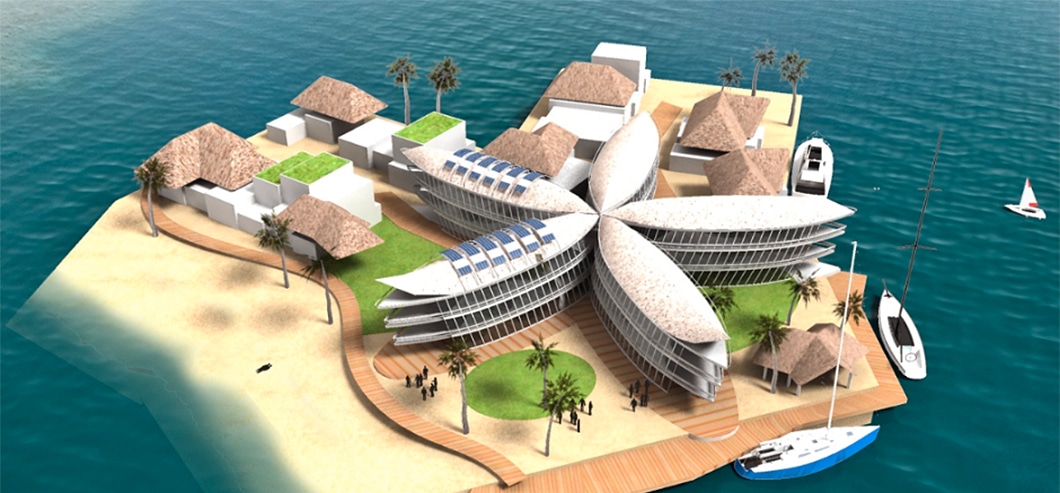
Life on the Water
The Floating City of the Future concept that we posted about last year could now become a reality.
Titled Artisanopolis, the prototype was designed by teams from Roark 3D and Fortgalt for The Seasteading Institute’s Architectural Design Contest. The floating city would be completely buoyant, running entirely off of solar and hydroelectric power. Greenhouses would produce a majority of the food supply, while a desalination plant would create safe drinking water for the island. An enormous wave breaker would completely surround the land to prevent damage to the structure.
To make this dream city a reality, The Seasteading Institute just announced that they recently signed a memorandum with the French Polynesian government to begin construction on this ocean domain by 2019 — that is, if all goes according to plan.

The City of the Future
For five years now, The Seasteading Institute has been researching the efficacy of a floating city at sea. Now, with French Polynesia agreeing to host the watery domain, they have to prove that it’s an economically worthwhile undertaking. Given the territory’s tourist-based economy, the ability to bring in revenue lies at the heart of the decision to move forward.
Legal investigations are necessary, too. The company must figure out who would be governing the city. Would it be politically autonomous or would French Polynesia be in charge of determining the law of the floating land?
Another extremely important thing to note is the environmental impact of the city. With rising global sea levels, many island nations are in a state of turmoil. Decisions must be made quickly if they are to survive into the next several decades. The Institute believes that a sustainable, floating island would create a solution to the problem. If Artisanopolis becomes property of French Polynesia, residents wouldn’t have to flee to other countries if they face a potential evacuation.
Even with all these factors to consider, Executive Director Randolph Hencken envisions a promising future. “The first islands are going to be a pilot project and there will just be many dozens [of people] to get started with and then..,we grow and are more successful, we will hopefully see hundreds and thousands of people living there,” he told ABC.
Indeed, cities like Artisanopolis could one day house a not-insignificant number of people. With the rising global population levels causing some to warn of a future in which we are unable to feed or house ourselves, finding alternative spaces to populate will be essential to our survival. Building future cities around the concept of clean, renewable energy like that used by Artisanopolis will also be of the utmost importance given our current impact on the environment, so hopefully this city does come to fruition and provide a usable blueprint for more cities to come.